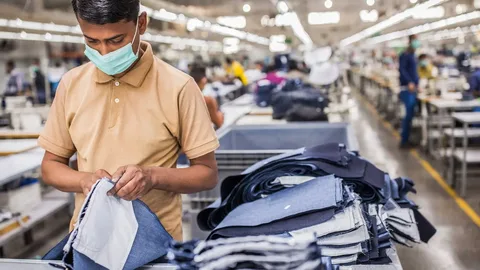Clothes should live a long life, then come back as new fabric.
That is the heart of monomaterial design.
One main fiber family from thread to tapes to labels.
Easy to sort. Easy to shred. Easier to melt or re-spin.
This guide shows how to plan stitch types and color families so your garment looks great now and recycles clean later.
What monomaterial really means (kid-simple)
Pick a lane and stay there:
- All polyester: shell, lining, thread, seam tapes, labels, zipper tapes.
- All polyamide (nylon): same idea.
- All cellulose (cotton/lyocell/viscose): more for naturals; recycling is mostly mechanical or chemical-to-pulp.
If you mix lanes—polyester fabric with cotton thread, for example—you make a “salad.” Recycling hates salad.
Why stitches matter for recycling
Seams are little highways of extra fiber.
Wrong stitch can add too many holes, too much thread, or make piles that jam a shredder.
The right stitch keeps strength while using less material and fewer perforations.
Stitch menu that plays nice
- Lockstitch (301)
- Pros: clean look, fewer holes, great for woven panels.
- Use for: side seams, yokes, pocket set lines.
- Tip: keep 8–10 SPI on wovens; 10–12 SPI on knits.
- Overlock (504 or 514)
- Pros: finishes raw edges on knits, adds stretch.
- Use for: knit construction and edge finishing.
- Tip: don’t over-tighten loopers; bulky loops = more mass in the stream.
- Coverstitch (406/607)
- Pros: flat hems that stretch and lie smooth.
- Use for: bottoms and sleeve hems, activewear panels.
- Tip: a two-needle coverstitch often suffices; three needles look sporty but add thread.
- Zigzag (304)
- Pros: simple, elastic, repair-friendly.
- Use for: small reinforcement on stretch zones.
- Tip: keep width modest so it doesn’t tunnel thin fabrics.
General rule: pick the lightest stitch that still passes your pull, burst, and wash tests. Less thread in = easier recycling out.
Thread choices that keep the loop clean
- Match polymer to fabric. PET fabric → PET thread. PA fabric → PA thread.
- Prefer recycled-content versions (recycled polyester thread, recycled PA) to trim footprint now, before end-of-life.
- Choose the finest ticket that passes strength. Smaller ticket = smaller needle = smaller holes = less wicking, less mass.
- In splash zones, pick anti-wick finishes (PFAS-free) so seams don’t drink water and fail early. Durability is climate math too.
Needle & SPI quick card (pin by the machine)
- Knits: ball-point 70/10–80/12, 10–12 SPI, stitch length 2.8–3.2 mm.
- Wovens: micro/round 80/12–90/14, 8–10 SPI, stitch length 3.0–3.5 mm.
- Always test first, then lock settings in the tech pack.
Color families that recycle better (and still look premium)
Color is not just fashion; it’s process.
Some recyclers color-sort; others blend. You can make both paths easier.
Strategy A: tone-on-tone family
Pick a tight palette around one hue—say deep navy + mid navy + dusty blue.
Benefits:
- Offcuts and take-back returns can be blended without wild gray.
- Threads, tapes, labels all match or sit close, so no standout specks after shredding.
- Fewer lab dips; spectral files can drive both thread and fabric matching.
Strategy B: solution-dyed / dope-dyed core colors
For PET and PA, use dope-dyed yarns for your top 5 brand colors.
Benefits:
- Lower water and energy at dye stage.
- Color fastness stays strong through many washes, meaning longer first life.
- When recycled, shades stay within a friendlier band.
Strategy C: neutral trims policy
If you must run multiple body colors, set trims to one neutral family (e.g., charcoal PET).
Labels, zips, threads, seam tapes—keep them in the neutral. Less color noise in the recycle stream.
Pattern moves that help recycling (and comfort)
- Fewer panels = fewer seams. Each removed seam deletes two allowances and meters of thread.
- Round corners (≥6–8 mm radius). Sharp tips shred into fluff, which clogs screens.
- Avoid seam-on-crease placements; move joins off the biggest bend lines so seams live longer.
- Release seams where repair is likely (e.g., underarm, side seam). A short chain-tail lets a tech open panels without cutting fibers—more repairs before recycling.
Labeling that tells the truth
Write it right on the care label (same polymer as the body):
- “Mono-material: Body/Thread/Tapes/Labels = 100% Polyester (recycled content where noted – polyester corespun thread).”
- “Take-back ready: scan for drop points.”
- Add a tiny QR to a page with fiber family, repair tips, and nearest return hubs.
Testing: don’t save grams that cause returns
Recycling is the end. First life must be strong.
- Seam slippage (wovens) and burst (knits) with your chosen stitch + thread ticket.
- Wick test on stitched coupon: dip 10 mm into dyed water for 30 mins; if the climb is high, try smaller needle or anti-wick thread.
- 50k flex on probable crease lines; seams should not crack or grin open.
- Color rub & wash fastness under your actual care cycle; no dye bleed onto trims.
If a lighter seam fails, the “recycling benefit” is lost to early waste. Lock specs that pass.
A simple one-week pilot plan
- Choose one garment (tee, jogger, or wind jacket).
- Build Version A (current bill) and Version B (monomaterial trims + finest passing thread + one fewer panel).
- Keep color to a tone family in both versions.
- Test slippage/burst, wick, flex, and run a 5-wash cycle.
- Shred a reject panel from each version; compare flake cleanliness and melt flow at your recycling partner.
- If Version B passes wear and makes cleaner flakes, lock it for the next drop.
Tech-pack lines you can copy
- Fiber family: 100% Polyester body; thread/tape/labels = 100% Polyester (rPET where available).
- Stitches: 301 on primary seams (9–10 SPI); 504 overlock on knit edges; 406 coverstitch hems.
- Thread ticket: finest passing (e.g., Tkt 40 construction, Tkt 60 hems).
- Needles: BP 75/11 (knits), Micro 80/12 (wovens).
- Color family: Navy set (N1/N2/N3) with matching trims; spectral files attached.
- Repair note: release chain at side seam 2 cm from hem.
- Take-back: QR to return map; mono-material statement on label.
Wrap
Monomaterial design is not a fad; it’s a workflow.
Pick one fiber family and keep everything loyal—threads, tapes, labels, zips.
Use stitches that do the job with less thread, place seams where they live long, and choose color families that blend nicely at end of life.
Do these calm, practical things, and you’ll ship garments that wear well now and come back clean later—ready for a second story as new fabric.






